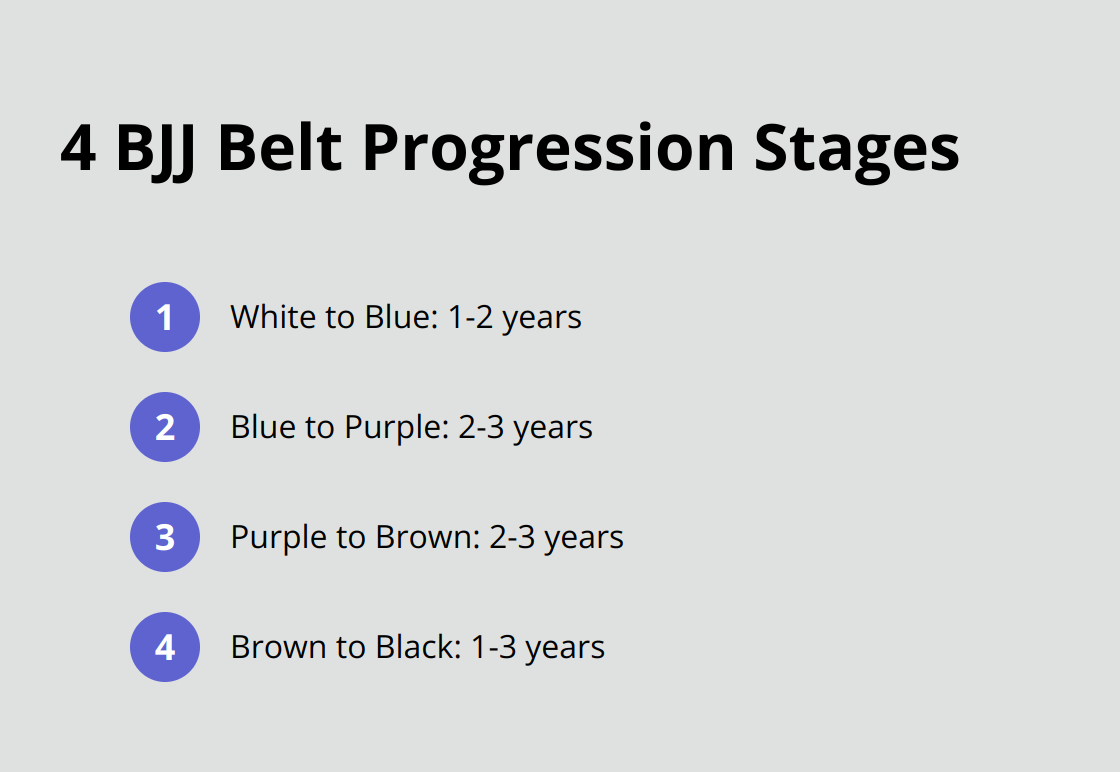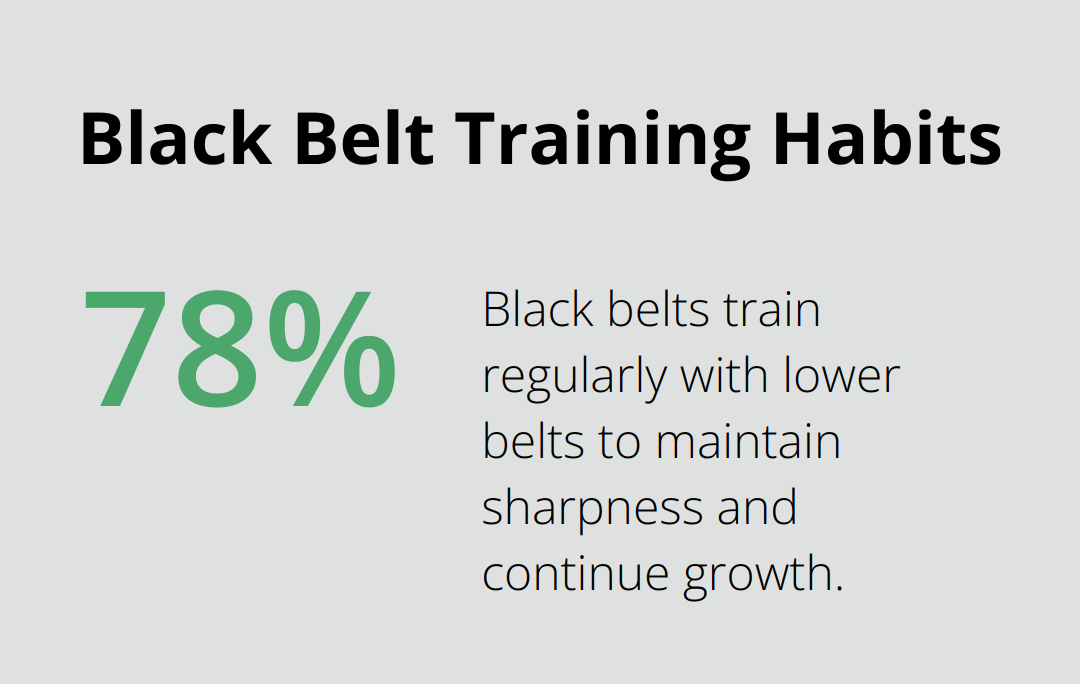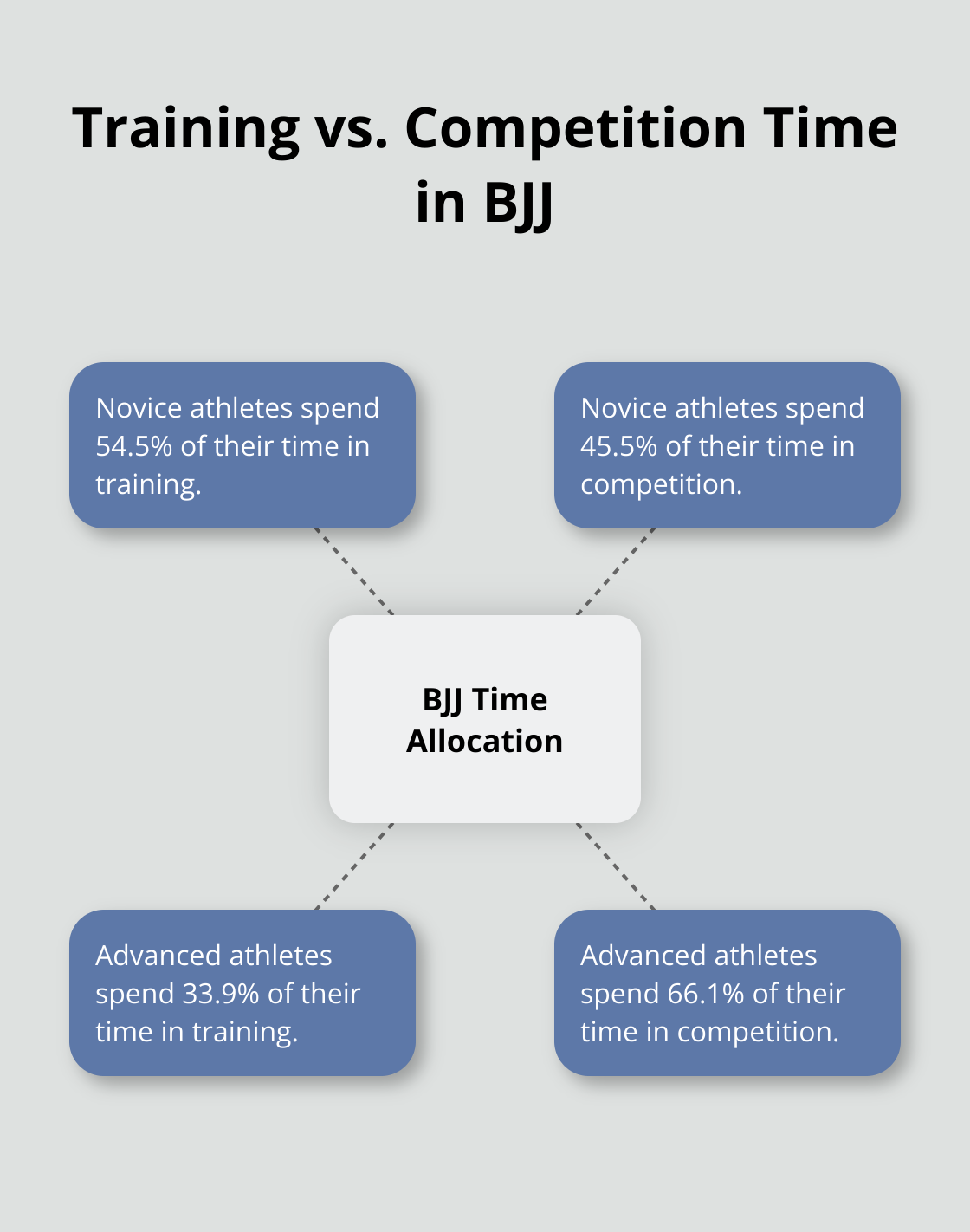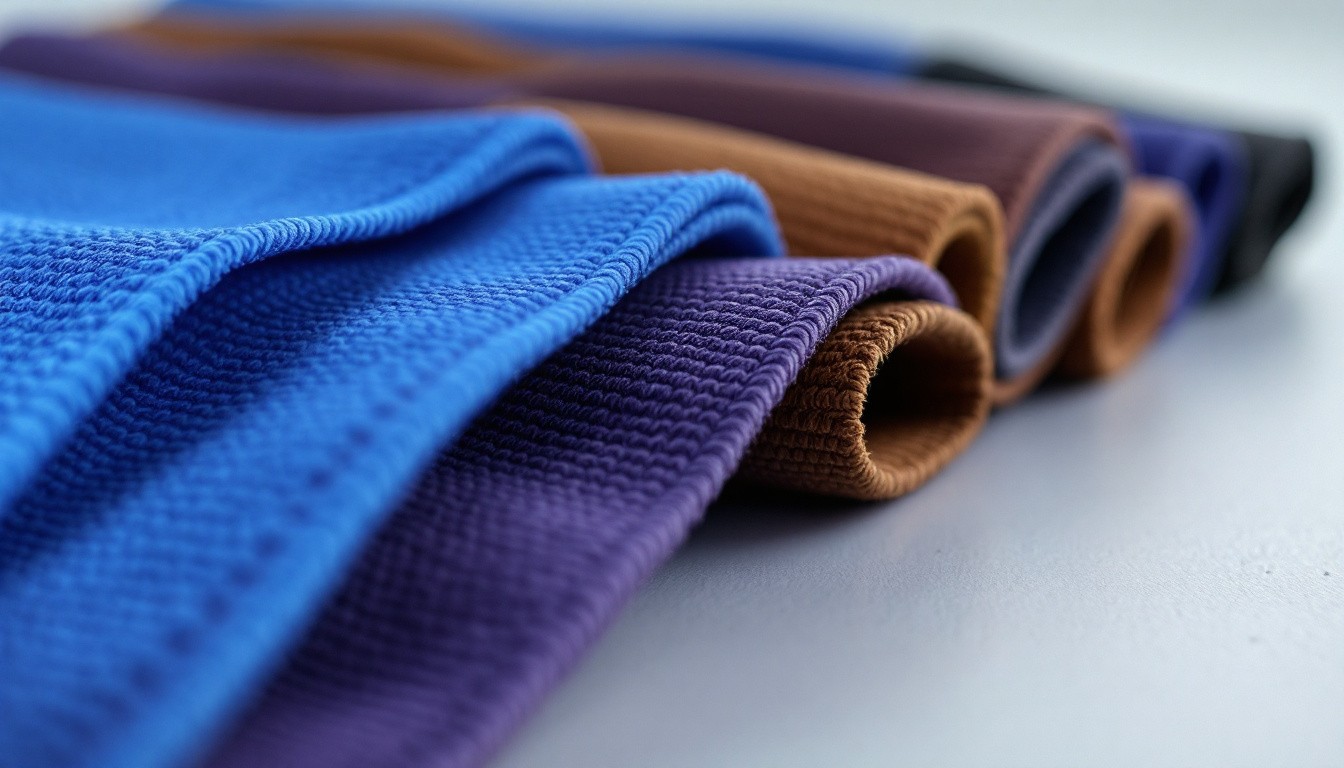At Jiu Jitsu, we often get asked about the meaning behind our colorful belts. The Jiu Jitsu belt levels are more than just a way to hold your gi together – they represent a journey of skill, dedication, and personal growth.
In this post, we’ll break down the different ranks in Brazilian Jiu-Jitsu and explain what each one signifies. Whether you’re a beginner or a seasoned practitioner, understanding the belt system can help you set goals and track your progress on the mat.
The Evolution of BJJ Belts
Origins of the BJJ Belt System
The Brazilian Jiu-Jitsu (BJJ) belt system has a rich history that dates back to the early 20th century. The belt system in BJJ was introduced in the 1960s by Fransisco Mansur, a student of Hélio Gracie who also practiced Judo. Mansur adapted the concept to better reflect the unique aspects of BJJ, creating a more rigorous and time-consuming progression.
Significance of Belts in BJJ
BJJ belts are not mere decorative accessories. They serve as milestones in a practitioner’s journey, reflecting years of dedication, hard work, and personal growth. Each belt represents a specific level of technical proficiency, tactical understanding, and overall mastery of the art.
At Souza Grappling Co., we use the belt system as a framework to guide students through their BJJ journey. This approach ensures a structured and progressive learning experience (which is essential for long-term success in the sport).
Typical Timeframe for Belt Progression
The journey from white to black belt in BJJ is notoriously long and challenging. On average, it takes about 10 to 15 years to achieve a black belt. However, this timeframe can vary significantly based on factors such as training frequency, natural aptitude, and competition experience.
Here’s a general breakdown of the time spent at each belt level:

It’s important to note that these are just averages. Some practitioners may progress faster, while others might take longer. At Souza Grappling Co., we focus on individual progress rather than strict timelines (as every student’s journey is unique).
The Role of Instructors in Belt Progression
Instructors play a crucial role in the belt progression system. They assess a student’s skills, knowledge, and attitude to determine when they’re ready for promotion. This evaluation process involves observing the student’s performance in training, competitions (if applicable), and their overall dedication to the art.
The next chapter will explore the specific ranks in the adult BJJ belt system, starting with the white belt and progressing through the various colors to the coveted black belt.
What Do BJJ Belt Colors Mean?
White Belt: The Blank Canvas
The white belt marks the beginning of every BJJ journey. It represents a clean slate, ready to absorb knowledge. White belts learn basic positions, escapes, and submissions. The average time a practitioner trains as a white belt is 1-2 years, but this can vary depending on many factors – including training frequency.
Blue Belt: Building the Foundation
Blue belt signifies the first major milestone in BJJ. At this stage, practitioners demonstrate a solid grasp of fundamental techniques and start to develop their own style. The IBJJF notes that blue belts usually spend 2-3 years at this rank, refining their skills and expanding their technical repertoire.
Purple Belt: The Technical Leap
Purple belt indicates a significant jump in technical proficiency. Practitioners at this level often teach lower belts and develop more advanced strategies. BJJ Heroes (a respected BJJ statistics website) reports that purple belts win approximately 25% of absolute division medals in major competitions, which showcases their growing competitiveness.
Brown Belt: Refining the Art
Brown belts stand on the cusp of mastery. They possess a deep understanding of BJJ principles and often hold their own against black belts. BJJ Eastern Europe (a leading BJJ news source) states that the average time spent at brown belt is 1-2 years.
Black Belt: The Expert’s Journey
Achieving a black belt in BJJ represents a monumental accomplishment, requiring an average of 10-15 years of dedicated training. Black belts continue to learn and refine their skills throughout their journey. A survey conducted by Jiu-Jitsu Times revealed that 78% of black belts still train regularly with lower belts to maintain their sharpness and continue their growth.

Red Belt: The Grand Masters
Red belts represent the rarest and most respected rank in BJJ. Practitioners who dedicate their lives to the art (typically after decades of training and teaching) receive this honor. As of 2023, BJJ Heroes reports fewer than 50 red belts worldwide.
At Souza Grappling Co., we emphasize that each belt color represents a stepping stone in a lifelong journey of learning and self-improvement. Our instructors provide personalized guidance to help students progress through these ranks, focusing on individual growth rather than rigid timelines.
The next chapter will explore the unique belt system designed for children in Brazilian Jiu-Jitsu, which differs from the adult ranking system to accommodate their developmental stages and learning pace.
How Does the Kids Belt System Work in BJJ?
The Five-Color Progression
Brazilian Jiu-Jitsu (BJJ) uses a separate belt system for young practitioners. This system acknowledges the different learning needs and developmental stages of children. The kids’ belt system consists of five colors: white, grey, yellow, orange, and green.
White Belt: The Starting Point
White belts mark the beginning of a child’s BJJ journey. Children learn basic movements, positions, and the importance of discipline and respect on the mat. The transition from white to grey belt typically takes 6-12 months (depending on the child’s dedication and progress).
Grey Belt: Building Fundamentals
Grey belts understand the basics and start to grasp BJJ principles. Children often spend 1-2 years at this rank. They refine their techniques and develop a deeper appreciation for the art.
Yellow Belt: Advancing Understanding
Yellow belts show a more advanced understanding of BJJ concepts. They execute techniques with greater precision and start to develop their own style. Children usually take 1-2 years to achieve this rank from grey belt.
Orange Belt: Significant Progress
Orange belts demonstrate substantial progress in their BJJ journey. They have a solid grasp of various techniques and apply them effectively in sparring sessions. Children typically spend 1-2 years at this rank before moving to green belt.
Green Belt: The Bridge to Adult Belts
Green belt represents the highest rank in the kids’ system before transitioning to adult belts. These young practitioners display a high level of skill and understanding (often comparable to adult blue belts). The time spent at green belt varies, as it bridges the gap between the kids’ and adult systems.
Transitioning to Adult Belts
Children transition to the adult belt system when they reach the appropriate age (usually around 16) and skill level. The transition point varies based on individual progress and instructor assessment.
Statistics show that novice athletes spend 54.5% of their time in training versus 45.5% in competition, while advanced athletes spend 33.9% in training compared to 66.1% in competition. This data highlights the shift in focus as practitioners progress in their BJJ journey.

Final Thoughts
The Brazilian Jiu-Jitsu belt system represents a journey of growth, dedication, and mastery. Each rank in the Jiu Jitsu belt levels signifies a milestone in a practitioner’s development, from the white belt’s blank canvas to the revered red belt of grand masters. The path from white to black belt spans 10 to 15 years of consistent training and personal growth, encompassing technical proficiency, mental fortitude, and a deep understanding of BJJ principles.
For children, the modified belt system provides a structured approach that aligns with their developmental stages. This system seamlessly transitions into the adult ranks, ensuring a continuous learning experience. The true value of the belt system lies not just in reaching the next color, but in the journey itself – the countless hours on the mat, the friendships forged, and the personal growth experienced along the way.
At Souza Grappling Co., we emphasize the importance of continuous learning and improvement, regardless of belt color. Our facility and instructors provide an environment for students to progress through the Jiu Jitsu belt levels at their own pace (while fostering a supportive community). We encourage you to embrace each stage of your journey, celebrate your progress, and always strive to improve your skills in Brazilian Jiu-Jitsu.




